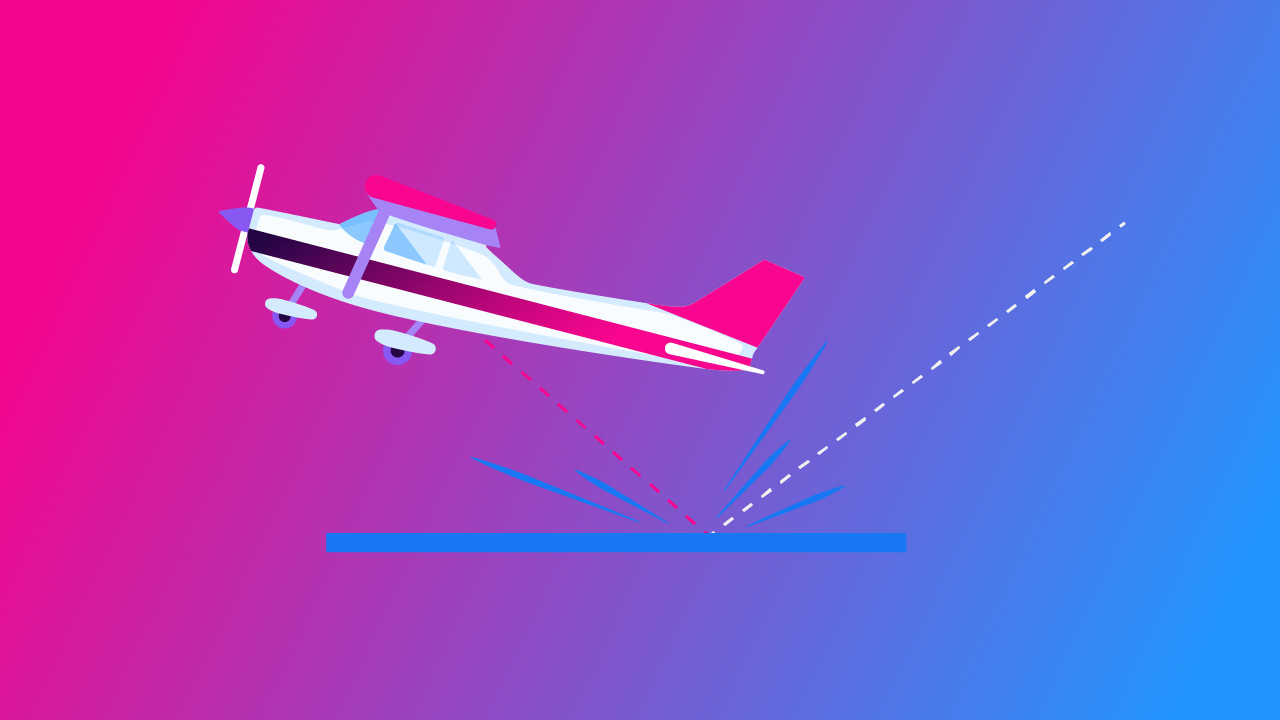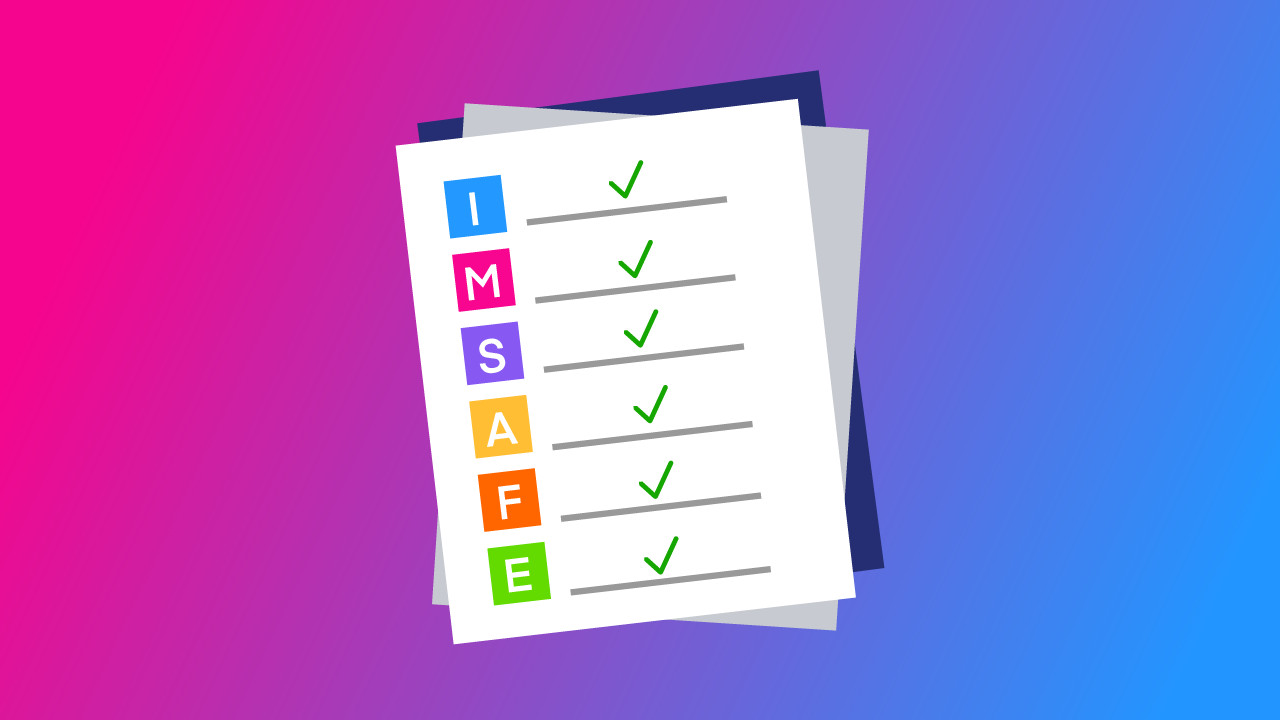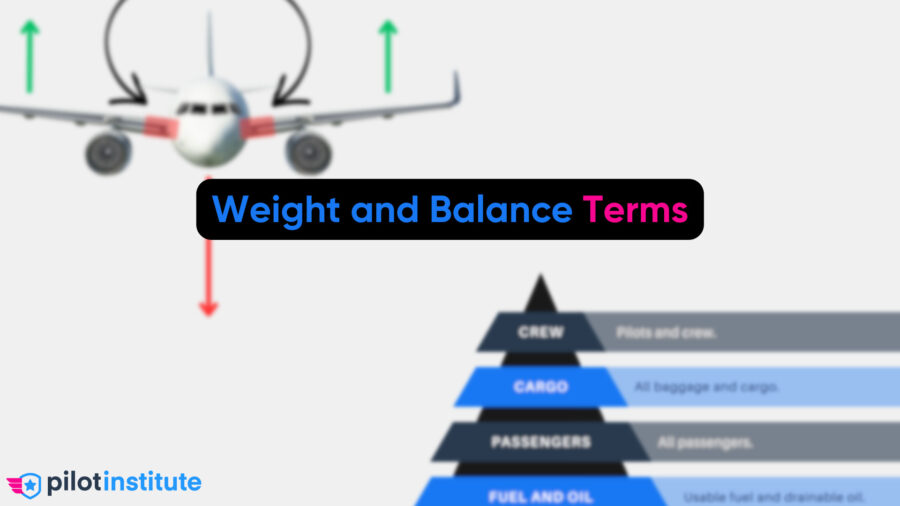-
Key Takeaways
-
What Causes a Bounced Landing?
- Landing Too Fast
- Improper Flare Technique
- High Descent Rate
- Common Aircraft Types
-
Step-by-Step Recovery from a Bounced Landing
- For a Minor Bounce:
- For a Significant Bounce:
- If Continuing the Landing:
-
How to Avoid a Bounced Landing
- Approach Speed
- Stabilized Approach
- Proper Flare Technique
- Landing Sight Picture
- Use the Rudder
- Practice Makes Perfect
-
Common Mistakes During Bounced Landing Recovery
-
Bounced Landing Cases
-
Conclusion
Everything seems to be going well on approach, and then out of nowhere, you feel the jolt. The wheels touch down too hard, and before you know it, the airplane is bouncing right back into the air.
What do you do?
Bounced landings are something almost every pilot has experience with. While they can be frustrating, they aren’t the end of the world.
The real challenge comes down to how you handle it. Knowing how to correct a bounce quickly can make all the difference.
Let’s break down what causes these bounces and what you need to do next to get things back under control.
Key Takeaways
- Bounced landings can result from excessive speed, improper flare, or high descent rates.
- Take action immediately: maintain directional control and decide to go around or land.
- Proper speed control and landing attitude are important for avoiding bounced landings.
- Even experienced pilots must remain cautious to prevent bounced landing accidents.
What Causes a Bounced Landing?
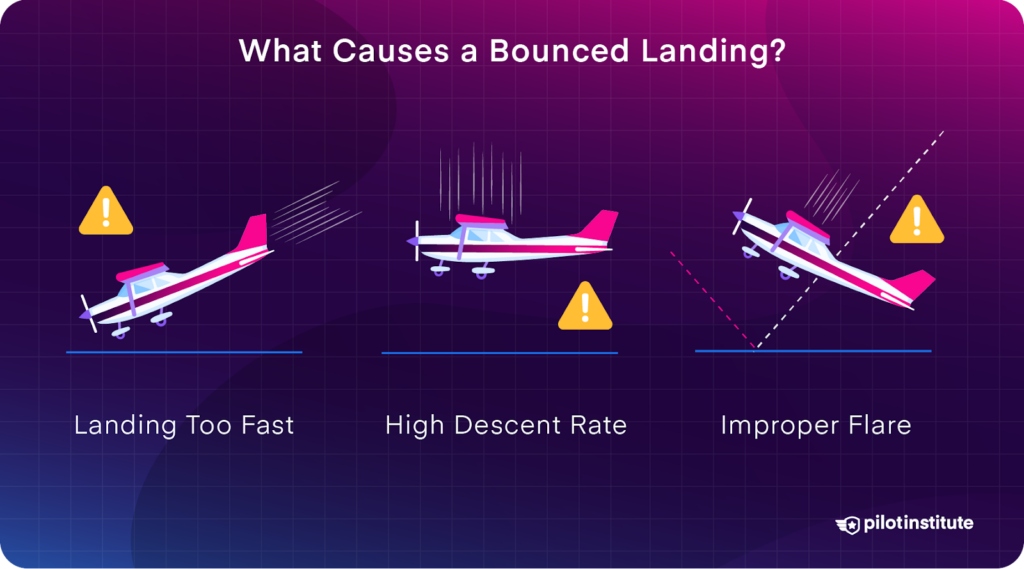
A bounced landing is a condition where the aircraft lands on the runway, but instead of rolling on the surface after touchdown, it rebounds/bounces off the ground. A bounced landing shouldn’t be confused with a “belly landing“, which involves a gear-up touchdown where the aircraft lands on its underside without extended landing gear.
A bounced landing can happen for several reasons:
Landing Too Fast
At high speeds, your aircraft may be unable to slow down enough before touching down on the runway. The excess speed causes the aircraft to bounce on the runway surface.
Improper Flare Technique
The flare is a maneuver where you elevate the aircraft’s nose slightly just before landing to decrease the descent rate. If you flare too aggressively or early, the aircraft will balloon and fall back down on the runway, causing a bounce.
High Descent Rate
While landing, if you have a high descent rate, the wheels can hit the ground hard and cause a bounce. For most light aircraft, you should aim for a descent rate of 500 feet per minute on the final approach.
Common Aircraft Types
Bounced landings can occur in different airplane models, including the popular Cessna 172. The Cessna 172, known for its forgiving nature, can encounter bounced landings if the pilot is not careful.
Cessna’s tricycle-type landing gears make it possible for the aircraft to porpoise, which is a series of bounces caused by the nose wheel touching the ground before the main gears.
Other trainer airplanes, such as the Piper Cherokee or Beechcraft Bonanza, might have different characteristics (low-winged aircraft), yet are equally vulnerable to bounced landings if the right circumstances exist.
Step-by-Step Recovery from a Bounced Landing
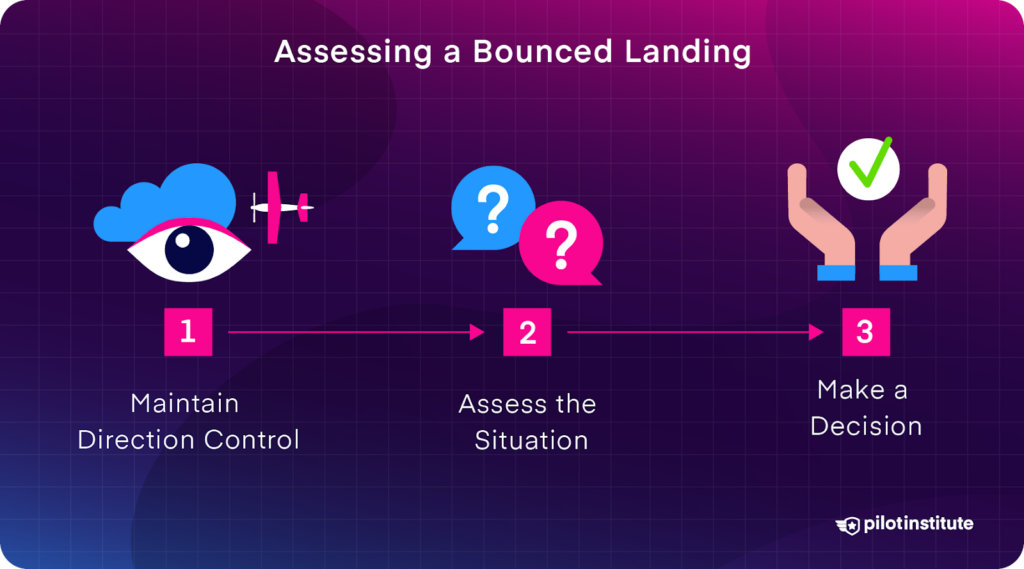
When you find yourself in a bounced landing situation, you must act right away. Here’s a step-by-step guide to safely recover.
- Maintain Directional Control: The first step is to align your aircraft in the runway’s direction. You should use the rudder to do this.
- Assess the Situation: Quickly assess the severity of the bounce. Was it a small or a big bounce?
- Make a Decision: Depending on your assessment, you have to proceed with the landing or go-around. In case you have doubts, it is always better to go-around.
For a Minor Bounce:
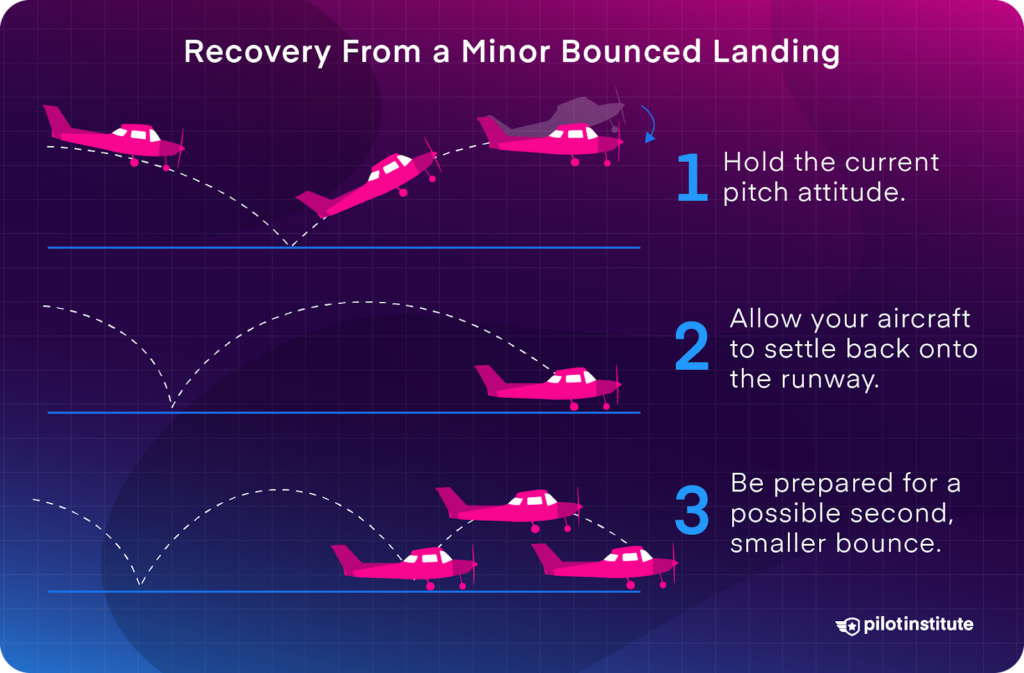
- Hold the current pitch attitude.
- Allow your aircraft to settle back onto the runway.
- Be prepared for a possible second, smaller bounce.
For a Significant Bounce:
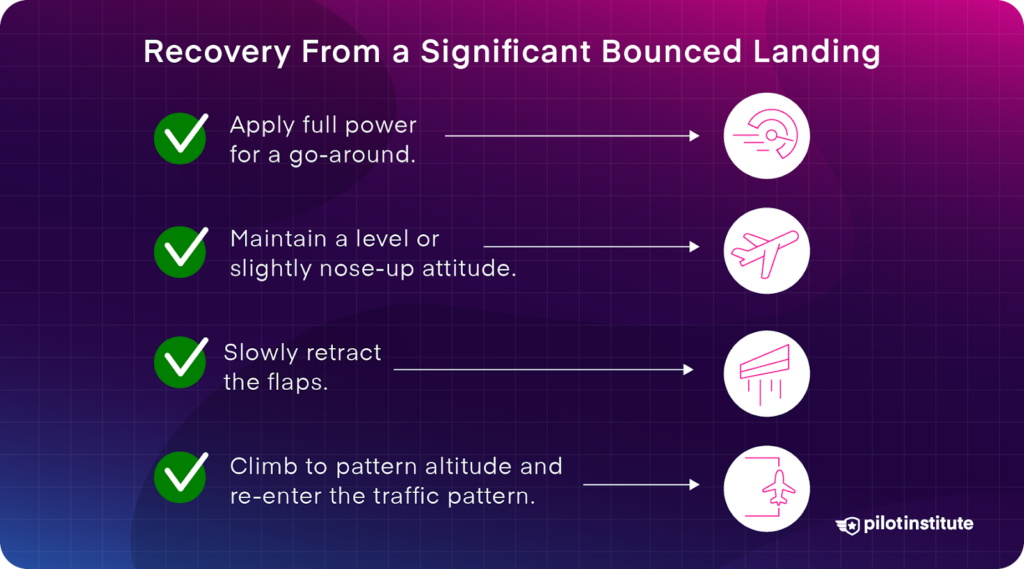
- Apply full power for a go-around.
- Maintain a level or slightly nose-up attitude.
- Slowly retract the flaps.
- Climb to pattern altitude and re-enter the traffic pattern.
If Continuing the Landing:
- Maintain the proper landing attitude.
- Use power as necessary to control the descent rate.
- Be prepared to go-around if the next touchdown isn’t smooth.
Note: The key to recovering from a bounced landing is to make small corrections with gradual inputs in pitch and roll. Stay in control and fly the aircraft.
How to Avoid a Bounced Landing
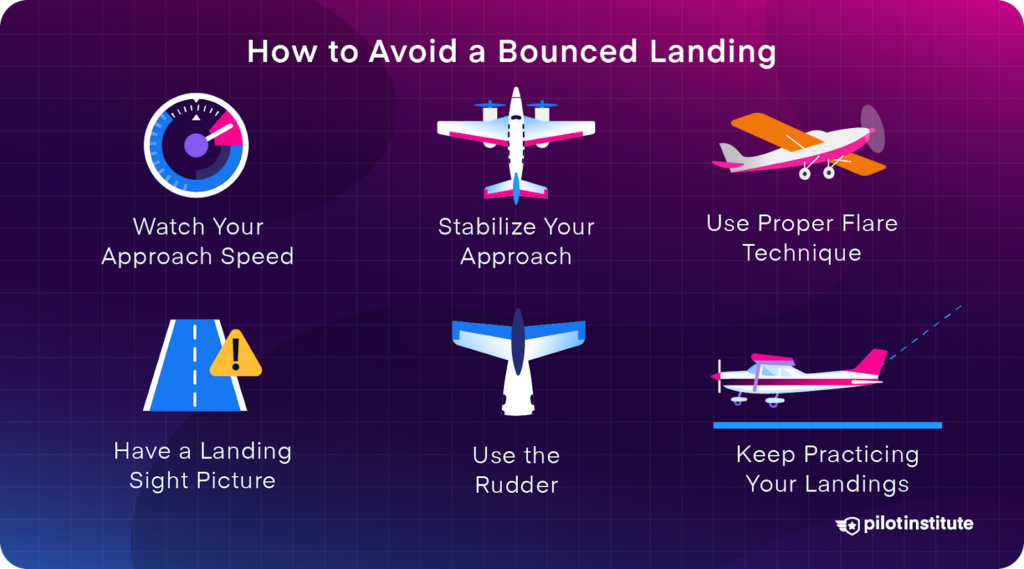
As a pilot, you don’t want to find yourself in a bounced landing situation. Here are some techniques to help you avoid bounced landings:
Approach Speed
During landing, you should maintain the approach speed for your aircraft type. This designated airspeed provides enough power for a flare without causing excessive floating.
For example, The Cessna 172 has an approach speed of 65 knots with full flaps.
Stabilized Approach
Ideally, the goal should be to achieve a stabilized condition with a constant rate of descent. You should follow the “3:1 rule” – for every 3 nautical miles distance from the runway threshold, you must be a thousand feet above the ground.
Proper Flare Technique
Begin your flare at the right height, generally 10 feet above the runway. Slowly apply backward pressure on the yoke to decrease the rate of descent and keep the nose aligned with the runway centerline.
Landing Sight Picture
When landing, ignore the area directly ahead of your aircraft and look towards the far end of the runway. This will allow you to judge how much to flare for a good landing and avoid a bounce.
Use the Rudder
In case of a strong crosswind, you can use the crab control or side slip to keep the aircraft aligned with the runway. If you don’t compensate for the wind using the rudder, you may cause the aircraft to bounce sideways or swerve off the runway.
Practice Makes Perfect
You must practice landing with a flight instructor and independently to learn how to touch down smoothly as often as possible. Once you learn how to land, you will become a better pilot and avoid bounced landings 99% of the time.
Note: Seasoned pilots can also encounter a bounce landing situation. That’s why practice is the most important step, followed by learning how to recover from a bounced landing.
Common Mistakes During Bounced Landing Recovery
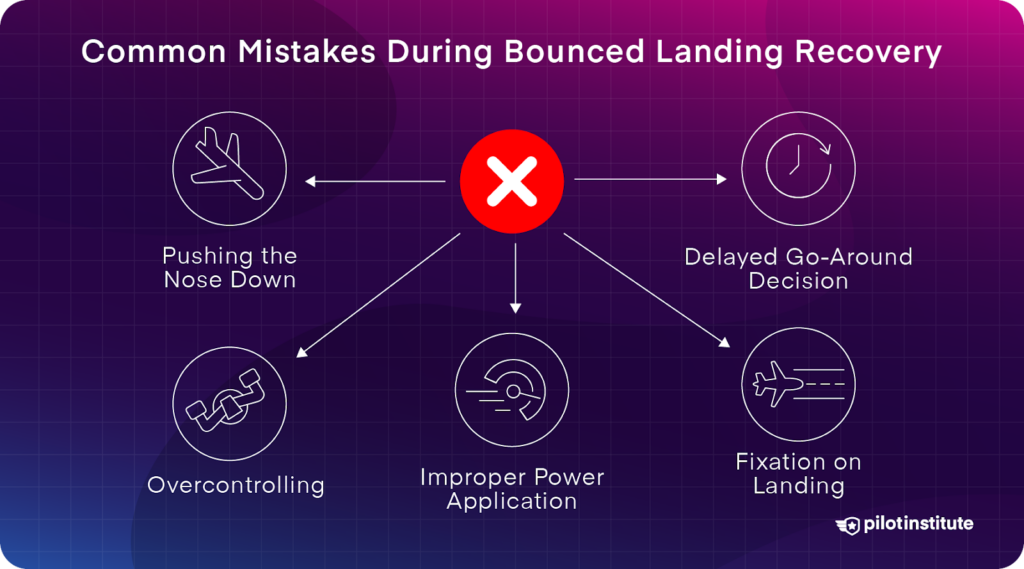
When you attempt to recover from a bounced landing, you should not make these common mistakes:
- Pushing the Nose Down: After the first bounce, do not panic and push your aircraft’s nose down to land. This can lead to a more severe bounce and possibly damage the nosewheel.
- Overcontrolling: During a bounce, overcontrolling or making drastic inputs when landing will worsen the situation and lead to pilot-induced oscillations.
- Delayed Go-Around Decision: If you feel that landing is not a good option, do not hesitate or wait too long to make a go-around decision. Doing so could result in losing runway space or airspeed.
- Improper Power Application: Once the aircraft bounces, you should slowly add power and raise the nose. If you add too much power too soon, the aircraft can pitch up and suddenly stall.
- Fixation on Landing: Often, pilots develop a mentality that they must land no matter what. Just remember, everyone makes mistakes, and making a decision to go-around is safer. That’s why building good judgment is an important part of your pilot training.
Making these common mistakes during a bounced landing recovery can lead to more bounces or a dangerous porpoise effect. A porpoise situation can quickly become uncontrollable and may result in structural damage or complete loss of control.
Bounced Landing Cases
Even the most experienced pilots may experience bounced landing situations. One such incident occurred on April 24, 2024, in Raleigh, North Carolina, with a Socata TBM-850. This aircraft was operating with two occupants on board when trouble started during the landing on Runway 32 at Raleigh-Durham Airport.
According to Aviation Safety Network, the airplane bounced twice on the runway before the pilot rejected the landing and attempted a go-around. However, during the go-around attempt, the aircraft stalled and crashed into the ground.
Fortunately, rescue teams saved the two crew members, but the crash damaged the aircraft. This case shows that even pilots with extensive flight experience must learn how to recover from a bounced landing.
In this case, the pilot waited too long, aggressively pitched the nose up, and applied power too quickly. He failed to react and recover from the bounced landing before executing a go-around. It’s best to prioritize safety and gain aircraft control during a bounced landing.
Conclusion
Bouncing a landing might catch you off guard, but it’s not something you can’t recover from. Learn how to react swiftly, make the right adjustments, and, when necessary, execute a go-around. Do these things and you’ll turn what could be a stressful situation into just another landing lesson.
Every pilot bounces at some point, and learning how to correct it gives you the confidence to handle whatever comes your way.
The more you practice, the less likely you’ll bounce in the first place—but even if you do, now you know exactly how to bounce back.
Fly safe!
